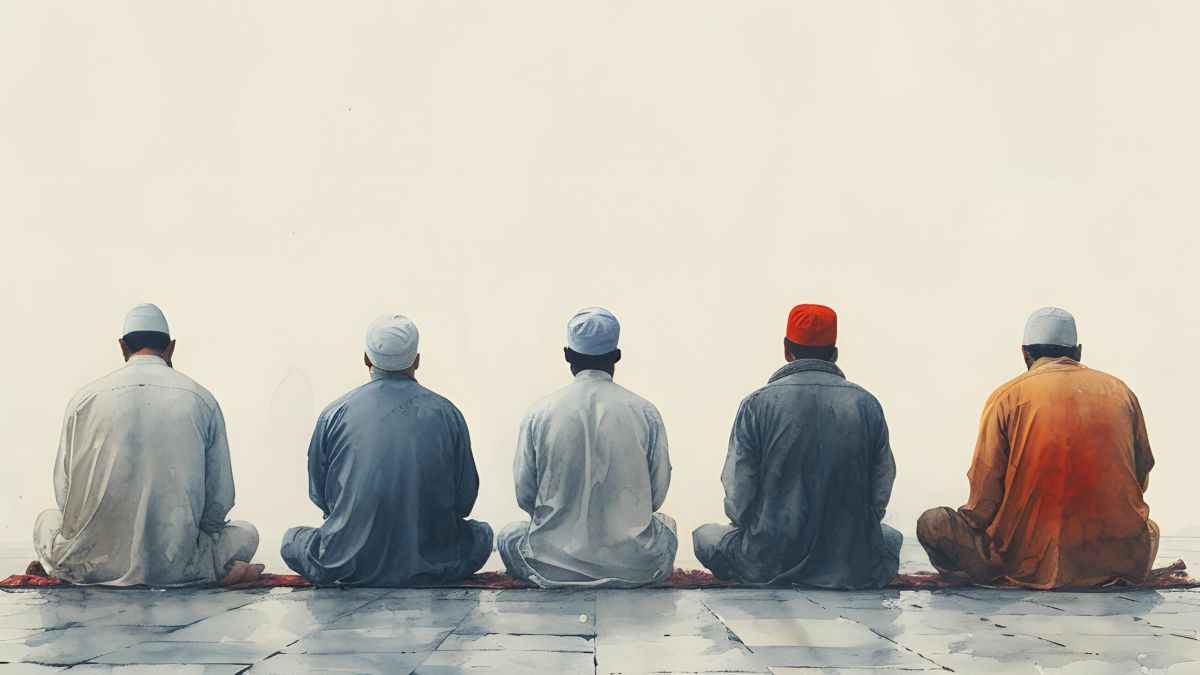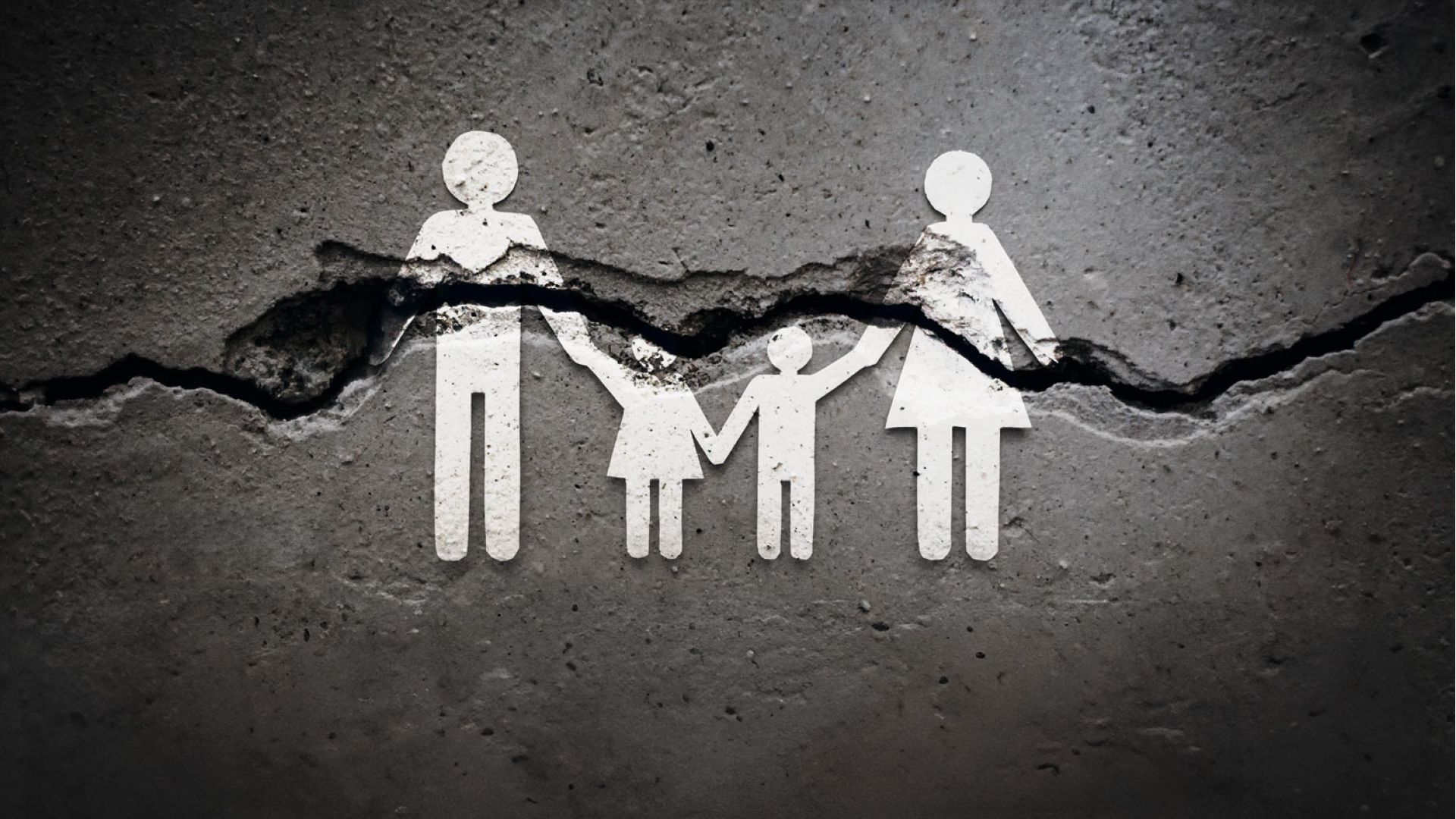The Obligation of Straightening the Rows and Attaining Perfection Therein
Imām Muḥammad ibn Ṣāliḥ al-ʿUthaymīn


The Ruling of Straightening the Rows of the Congregation
It is from the sunnah to straighten the rows when performing congregational ṣalāh. As the Prophet (صلى الله عليه وسلم) used to order this saying: “Straighten your rows”1, guiding and directing his companions to this to the extent that they fully comprehended and understood it from him. One day, when he (صلى الله عليه وسلم) came upon the congregation and the iqāmah was called, he found a man whose chest was visible [due to his forward position in the row], He said: “Servants of Allāh! You must indeed straighten your rows or Allāh shall certainly cause dissension to occur amongst your hearts”.2 His saying “You must indeed straighten” is a statement made in answer to an oath that linguistically precedes it; It is like he (صلى الله عليه وسلم) said “By Allāh! You must indeed straighten…”. This ḥadīth is also precautionary as he (صلى الله عليه وسلم) said: “or Allāh shall certainly cause dissension to occur amongst your hearts” that is, among your opinions and views leading to the disunity of your hearts. This is a clear warning to those who abandon straightening the rows. For this reason, some scholars have adopted the stance that straightening the rows is obligatory. They evidence this position using the command issued by the Prophet (صلى الله عليه وسلم) and the threat made against those who oppose this order. They reason that if an act is ordered and the one who opposes it is additionally censured, we are unable to rule that act as merely recommended. Herego, the correct opinion in this issue is that straightening the rows is obligatory, and that any congregation that does not straighten their rows is sinful. This is also the apparent position elucidated from the statements made by Shaykh al-Islām Ibn Taymiyyah (رحمه الله).
[Q]: If a congregation opposes this order and does not straighten the rows, is their ṣalāh invalid because they have abandoned an obligatory command?
[A]: There is a possibility of invalidity. It may be said: Their ṣalāh is invalid because they have abandoned an explicit order. Although there is a greater likelihood that their ṣalāh is still considered valid, although they are sinful. This is because straightening the rows is obligatory for the performance of (congregational) ṣalāh, not a part of the ṣalāh itself. That is, it is an action that is external to the performance of the ṣālāh. A person will be sinful in relation to his abandonment of any act that is obligatory for the performance of ṣalāh, but his ṣalāh will still be considered valid. For example, the adhān is obligatory for the performance of ṣalāh, but the ṣalāh itself is not invalid if it is not called.
Straightening the rows is accomplished by complete straightness in the standing row, wherein no one stands in front of another.
[Q]: Is this straightness achieved by lining up the front of the congregation’s feet?
[A]: In terms of the upper portion of the body, it is achieved by lining up the shoulders. The lower portion is accomplished by lining up the heels of the feet. This is applicable to any even surface. As for praying on uneven ground, we should not take into account the shoulders of the congregation as the shoulders and heels of the people will not be in line with one another on uneven ground. Rather, we should only examine the heels in such a circumstance. As the heels, located below one’s thighs, provide support to the entire body. Therefore, these should be taken into account when attempting to straighten the rows. As for the tips of the feet, they do not represent a valid measure due to their inherent disparity. As some people have extremely large and others very small feet. We should, instead, use the heels as a measure.
A Congregatory Row Which Includes the Imām
The commanded act of straightening the rows, for which a warning has been issued, refers to straightening that entails people standing completely parallel to one another. There is no difference, with regards to this, whether the rows of the congregation are inclusive of the imām or just those behind him. In consideration of this, if the imām and those being led are standing in the same row, then the imām should stand completely in-line with those he is leading. He should not position himself slightly forward, contrary to the stance taken by some scholars who reason this slight forward position facilitates distinction of the imām from those being led. In response we say: This is contrary to the apparent meaning of the ḥadīth in which the Prophet (صلى الله عليه وسلم) held Ibn ʿAbbās (رضي الله عنه) by his head and positioned him on his right [during ṣalāh]. It was not narrated that he (صلى الله عليه وسلم) positioned Ibn ʿAbbās slightly behind him.3 Also, the imām and those being led, in this circumstance, are considered a single row. As such, it is legislated to straighten that row.
Attaining Perfection in the Formation of Congregatory Rows
The word used in Arabic to denote ‘straightening’ may also refer to the ‘attainment of perfection or completion’. As Allāh—the Most High—said:
وَلَمَّا بَلَغَ أَشُدَّهُ وَاسْتَوَىٰ
“And when he [Mūsá] attained his full strength, and was perfect (in manhood).”
(Al-Qaṣaṣ, 28:14)
In this context, if we interpret the word to also mean the attainment of perfection, then straightening the rows is inclusive of more than merely positioning ourselves parallel to one another. Rather, perfection in our rows may be accomplished by means of other acts:
- Standing parallel to one another: This is obligatory according to the correct opinion as aforementioned.
- Standing in a tight formation (i.e. no gaps): This represents a form of perfection and the Prophet (صلى الله عليه وسلم) used to command it. Encouraging his ummah to form lines that resemble the lines formed by the angels before their Lord by standing in a tight formation and completing the preceding front rows before subsequent ones. This tight formation represents a means by which spaces are not provided for the Shayātīn. A tight formation differs from crowding, jostling, or shoving one another. For this reason, the Prophet (صلى الله عليه وسلم) used to say: “Form your lines, line up your shoulders…Do not leave spaces for the Shayātīn”.4 That is, do not allow spaces to occur in your rows which the Shayātīn may occupy. As the Shayātīn enter amidst the rows of the congregation like the young lambs of a sheep5 such that they disturb and distract a praying person from his ṣalāh.
- Completing the front rows before the latter ones: This is a part of straightening the rows, and is represented by not beginning the second row before completing the first one. Likewise, the third row should not be started until the second one is completed and so on. The Prophet (صلى الله عليه وسلم) has encouraged the completion of the first row of the congregation in his saying: “If the people only knew the reward of the adhān and the first row, then found no recourse but to draw lots for it they would do so.”6 That is, if two people came upon the first row and one of them said to the other: “I am more deserving of it than you” and the other replied: “I deserve it more”. The first would say: “Let us draw lots to decide who will occupy this empty place”.It is among the deceptive, playful mockery of Shayṭān with many people nowadays that they enter the masjid and, upon seeing only half of the first row occupied, they choose to start the second row. Then, when the iqāmah is called and it is said to them: “Complete the first row”, they begin turning around as if stunned or astonished. Such behaviour is related either to extreme ignorance, or because some imams lack the care and attention to straightening the rows of those praying behind them, ensuring that they are in a tight formation, or that the front rows are completed before the latter ones.The imām ordering those behind him to straighten their rows is a recommended act if there is a need for it—that is, if the row is visibly crooked—and should not be considered recommended in every instance regardless. Instead, it should be a reactive practice such that if the imām sees a person in the congregation positioned slightly forward, he should say: “Move back O So-and-So”, like the aforementioned statement of the Messenger (صلى الله عليه وسلم) to the man whose chest was visible in the row. He (صلى الله عليه وسلم) also used to straighten the rows himself with his hand, touching the shoulders of the people7, and their chests from one end of the row to the other.8 It is obligatory upon the imām to have patience in relation to the congregation, conditioning and accustoming them to straightening their rows such that they do it themselves. As it is impossible for any believer who knows the statement of the Messenger (صلى الله عليه وسلم): “You must indeed straighten your rows or Allāh shall certainly cause dissension to occur amongst your hearts” to be completely careless regarding the straightness of the row. There is also a baseless, fabricated ḥadīth that is famous among the people: “Indeed, Allāh does not look at the crooked row”.
- The rows being formed close to one another: That is, in relation to one another and in relation to the imām. This is because they represent a single congregation, which is a word that stems from the act of gathering or congregating. There is no complete congregation or gathering if large distances exist between its members. As such, the closer together the rows themselves are and the closer they are in proximity to the imām, the more superior and elegant the gathering.We have seen that, in some masājid, the space between the imām and the first row is so extensive that it could accommodate another row or two. Here, the imām has positioned himself forward greatly. I surmise this act to stem from ignorance as it is from the Sunnah that the imām is close to those praying behind him, and that every row is close to the one that precedes it. The extent of this closeness should be sufficient enough for the performance of sujūd with some extra space.
[Q]: Is the second row like the first row in relation to the third such that the saying of the Prophet (صلى الله عليه وسلم): “If the people only knew the reward of the adhān and the first row, then found no recourse but to draw lots for it they would do so” applies to it in the same way or not?
[A]: It is most apparent that it is not. This is because standing in the first row requires that one presents himself to the masjid with immediacy, as early as possible. Whereas, this is not the case for the second row. Although, in general, expeditiously going to the masjid is a most desirable act. - Standing close to the imām: The evidence of this is the saying of the Prophet (صلى الله عليه وسلم): “Let men who have reached puberty, and gained understanding and intellect stand close to me”.9 The closer one stands to the imām, the better. For this reason, the Prophet (صلى الله عليه وسلم) also encouraged the people to come as close to their imām as possible when praying Jumuʿah ṣalāh.10 This is because closeness to the imām stipulates being next to him during the khuṭbah, and during the ṣalāh both of which are most desirable. While some people show carelessness with regards to this, never aspiring for this closeness.
- Favouring the right side of the row over the left: That is, the right side of the row is superior to the left—although not in every circumstance. For example, if there is space in the first row. If the right side of the row was superior in every circumstance, the Prophet (صلى الله عليه وسلم) would have said: “Complete the right sides of the front rows before the latter ones”. Instead, he (صلى الله عليه وسلم) said: “Complete the front rows, then the subsequent ones”11. It is, therefore, not legislated for the right sides of the rows to be completed only.If we examine the foundations of the legislation, we may elucidate how the left side should be occupied. If both the right and left sides of the row are equal or almost equal, then it is better to join the right side. For example, there are five people standing on the right and five on the left of the row. If the eleventh person arrives, we would say: “Join the right side of the row” because the right side is better when both sides are equal or close to equal. In this way, there is no visible disparity between the right and left sides of the row. If there is a significant disparity between the two sides, then the left side that is closer to the imām is superior to the right side that is far from him. The evidence of this is that, when the order of congregatory ṣalāh was first issued and three people were praying together, the imām would stand in the middle of them. That is, with a person standing on either side of him.12 This proves that the right side of the imām is not superior in every situation. For, if the right side was better in every respect, the two being led would stand on the right side of their imām instead. Rather, it has been legislated that one stands to the imam’s right and the other to his left with the imām in the middle. Such that no one side is unjustly wronged from occupants.
- Women standing isolated by themselves: That is, they stand behind the men and do not mix with them. The evidence of this is the saying of the Prophet (صلى الله عليه وسلم): “The best rows of men are the first ones and the worst are the latter ones. The best rows of women are the latter ones and the worst are those in the front”13 He (صلى الله عليه وسلم) has clarified in this ḥadīth that the farther the women are from the men, the better. Such that their rows should be as far from the men as possible. The reason for this is the societal disturbances that stem from women being close to men. Even more severe is that they mix with them, to the extent that a woman stands next to a man or a row of women is formed between the rows of men. This is most inappropriate, closer to being completely impermissible with the additional fear of the occurrence of societal disturbances among the congregation. Even if these societal disturbances are completely negated, such that all the men in the congregation are maḥarim for the women present, it is still contrary to what is ideal or best.
- Positioning Children in Congregational Prayers
[Q]: Is positioning the children in the latter rows, with the men in the front rows representative of attaining perfection in the rows?
[A]: Some scholars have adopted the opinion that such an act represents attainment of perfection in the formation and straightening of the rows. Such that only men over the age of puberty stand next to the imām, with the children occupying the latter rows. For example, if we have one hundred men that make a single, full row, and one hundred children that make up half a row, we would position the hundred men in the first row and the hundred children in the second row. Such that should a child attempt to join the first row, we would send him back as attaining perfection in the row is to have only the men in the front. The proponents of this stance use as evidence the saying of the Messenger (صلى الله عليه وسلم): “Let men who have reached puberty, and gained understanding and intellect stand close to me”.Although this position requires reconsideration. We say: Any child that comes forward to occupy a space is more deserving of that place than anyone else. This is because of the general evidence which proves that a person who precedes another to a thing is more deserving of it. The masājid are the houses of Allāh and all His servants should be considered equal to one another therein. Such that if a child comes forward to fill a space in the first row, for example, he should be left in his place. Also, if we were to remove all of the children from the choicest, best places in the masjid and gather them all in one place, they will likely play with one another as they are all in a single row by themselves. Then, there is another problem with this: If men enter after the congregatory rows have been formed, should the children be sent back continuously during the ṣalāh? Even if they are left to occupy a full row by themselves, they will disturb the ṣalāh of those men praying in rows behind them.Furthermore, extricating them from their places in the first row leads to two dangerous matters:- The child begins harbouring hate for the masjid. This is because a child—despite being young—should not be made to feel small or insignificant. Such treatment may remain deep-seated in their hearts.
- It breeds enmity and hatred within that child for the man who relegated him from the first row.
In summary, ordering children to the back of the masjid is a weak position. As for his (صلى الله عليه وسلم) saying: “Let men who have reached puberty, and gained understanding and intellect stand close to me” it is only meant to encourage the men among the congregation to occupy the front rows. It does not stipulate relegating children to the back, away from their positions in the front.
[Q]: If there are more people positioned on the right side of the row than the left, should the imām request that the congregation adjust themselves such that the left and right sides are equal?
[A]: If the disparity is plainly evident, then there is nothing wrong if the imām requests that both sides are equated with one another. This is a form of clarifying the Sunnah to them as most people surmise that the right side of the row is better, regardless of circumstance. To the extent that occasionally the right side is completely filled with only one or two people standing on the left. As the author of al-Furūʿ said: “There is a good possibility that being on the right but far from the imām is not better than being on the left and close to the imām.”
[Q]: Regarding the saying of the Prophet (صلى الله عليه وسلم): “The person who performs wuḍūʾ with excellence, does not take a step [to the masjid] except that his level is raised and his misdeeds are expiated with each step regardless of whether his house is near or far”14, if a person was to leave his house intending to go to the masjid, but performs wuḍūʾ at the masjid when he arrives there, will he be deserving of the reward mentioned in this ḥadīth?
[A]: The apparent wording of the ḥadīth would indicate that he is not deserving of this reward. This is because there is a difference between a person who leaves his home fully prepared for the ṣalāh, specifically intending it and another who arrives at the masjid unprepared to actually pray. Of course, if his house is quite distant and he is not able to perform wuḍūʾ there before departing for the masjid, then we can hope that he may also attain the reward mentioned here.
Endnotes:
[1] Authentic: narrated by al-Bukhārī: 723 and Muslim: 433.
[2] Authentic: narrated by al-Bukhārī: 717 and Muslim: 436.
[3] Authentic: narrated by al-Bukhārī: 698 and Muslim: 673.
[4] Authentic: narrated by Abū Dāwūd: 666 and graded authentic by Shaykh al-Albānī. See Sunan Abī Dāwūd edited by Muḥī al-Dīn ʿAbd al-Ḥamīd.
[5] Authentic: narrated by Aḥmad 3:154 and graded authentic by Shaykh al-Albānī in Ṣaḥīḥ al-Targhīb wa-al-Tarhīb: 491.
[6] Authentic: narrated by al-Bukhārī: 615 and Muslim: 437.
[7] Authentic: narrated by Muslim: 432.
[8] Authentic: narrated by Abū Dāwūd: 664 and and graded authentic by Shaykh al-Albānī. See Sunan Abī Dāwūd edited by Muḥī al-Dīn ʿAbd al-Ḥamīd.
[9] Authentic: narrated by Muslim: 432.
[10] Authentic: narrated by Abū Dāwūd: 345 and graded authentic by Shaykh al-Albānī. See Sunan Abī Dāwūd edited by Muḥī al-Dīn ʿAbd al-Ḥamīd.
[11] Authentic: narrated by Abū Dāwūd: 671 and graded authentic by Shaykh al-Albānī. See Sunan Abī Dāwūd edited by Muḥī al-Dīn ʿAbd al-Ḥamīd.
[12] Authentic: narrated by Muslim: 534.
[13] Authentic: narrated by Muslim: 440.
[14] Authentic: narrated by al-Bukhāri: 647 and Muslim: 649.
Source: Al-Sharḥ al-Mumtiʿ 3: 9-19
Translated by: Riyāḍ al-Kanadī
Most Popular: Last 30 Days








